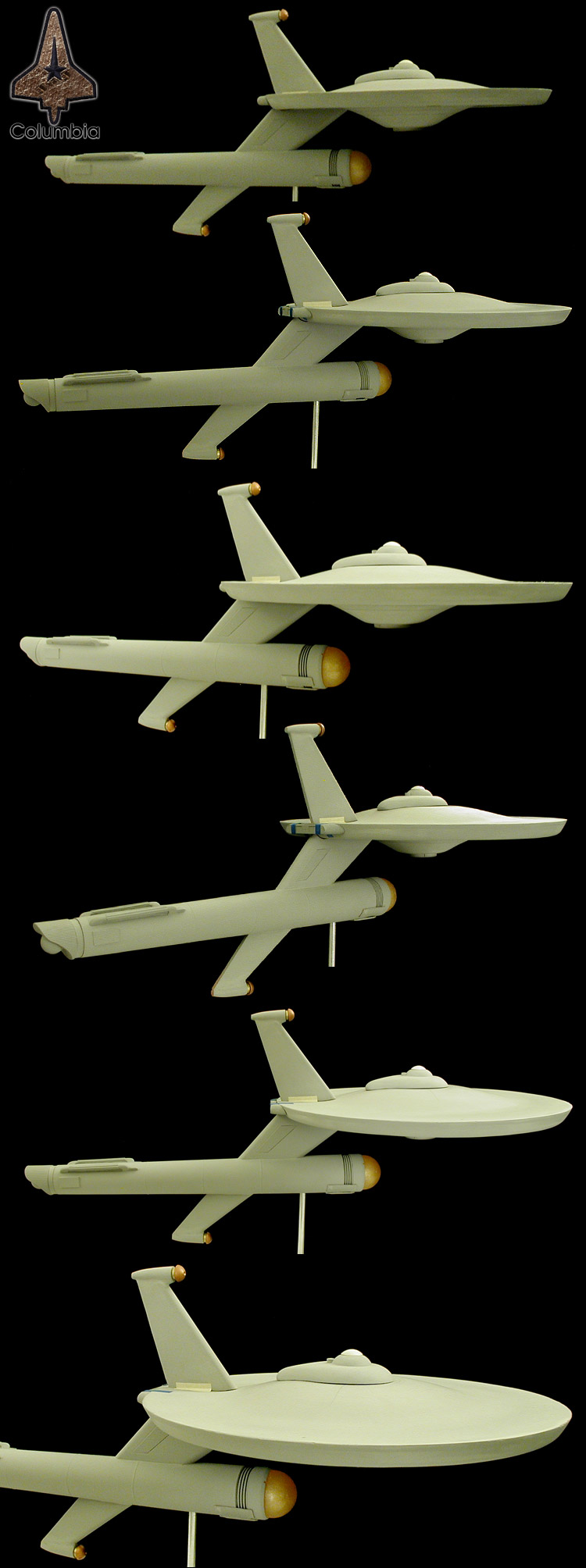As long as we're kicking around alternative designs, design critiques, and philosophy-of-use, I thought I would weigh in...
The Saladin/Hermes really intrigued me in the 1970s and 80s. I even bought the
fanon blueprints for them. Cool little ship in my book, until the awkward one-nacelle aspect of its design lost its charm for me.
The Saladin and Hermes, according to those (clearly unofficial) blueprints, housed a forward-launching hangar deck in the lower vortex of the saucer. I have my doubts about how practical such an arrangement would be for a Federation starship in the TOS/TAS Universe, or anything derived from it. I'm not sure if the deck arrangements and height would be compatible, either. It comes back to the question of how many decks are there in a Constitution-class starship's (or similar starship's) saucer and what the overall dimensions of the ship are.
I prefer the two-nacelle designs embodied by the Reliant, Saratoga, and Grissom. The other design aspects of these ships don't always make sense, but the symmetry and overall lines of these ships do have a very appealing logic to them. To my eye, the Reliant was (very roughly) the TMP-era's Saladin, while the Grissom was the TMP-era's Hermes.
Count me in the camp that says a Federation starship-of-the-line, the kind of non-Runabout ships that either can't land or don't typically do so, are not going to be of much practical use if they can't deploy extra-vehicular craft. Some may be more capable than others at doing so, but if it's a starship, it has to have some kind of built-in hangar.
That's just my rant.
Setting aside all the philosophical and design considerations, the Saladin/Hermes concept is still really neat. I'm glad this was before TWOK so FJ didn't give it a roll-bar.
One other design concept should not be overlooked: re-imagining JJ's Kelvin as a Saladin/Hermes. Instead of an upper secondary hull, an FJ/TOS interpretation could give this ship a second nacelle. The pseudo-Stargazer-style nacelle-above/nacelle-below a single saucer hull arrangement would make the saucer a more useful platform for weapons, allowing for cleaner flank and aft firing arcs.
Just my 2¢.





